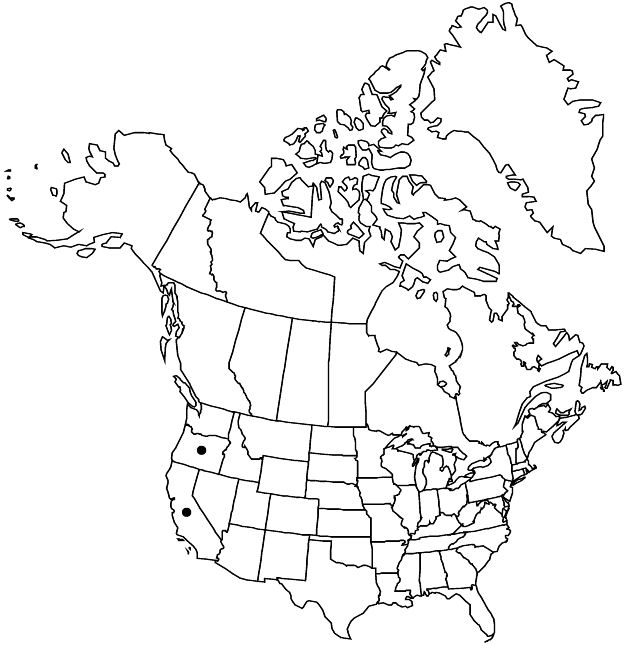Ceanothus thyrsiflorus
Mém. Acad. Imp. Sci. St. Pétersbourg Hist. Acad. 10: 285. 1826. (as thyrsiflora)
Shrubs, sometimes arborescent, evergreen, 0.5–6 m. Stems erect, usually ascending to arcuate, rarely prostrate, not rooting at nodes; branchlets green, not thorn-tipped, angled in cross section, flexible, not tuberculate, sparsely puberulent or glabrous. Leaves: petiole 3–10 mm; blade flat to cupped, elliptic to ovate, 10–40(–50) × 5–15(–20) mm, base obtuse to rounded, margins denticulate to serrulate, usually not revolute, sometimes incompletely revolute, teeth glandular, 23–48, apex obtuse, abaxial surface pale green, sparsely puberulent to villosulous or glabrate, veins prominently raised, puberulent to villosulous, adaxial surface dark green, glabrate; 3-veined from base. Inflorescences terminal, usually racemelike, rarely paniclelike, 2.5–9 cm. Flowers: sepals, petals, and nectary usually pale to deep blue, rarely white. Capsules 3–4 mm wide, weakly lobed; valves smooth, viscid, not crested. 2n = 24.
Phenology: Flowering Mar–Jun.
Habitat: Sandy or rocky flats and slopes, maritime chaparral, open sites in mixed evergreen and conifer forests.
Elevation: 10–600 m.
Distribution

Calif., Oreg., Mexico (Baja California).
Discussion
Ceanothus thyrsiflorus occurs along the coast from Coos County, Oregon, south to Santa Barbara County, California, and disjunctly near Eréndira, Baja California. A wide range of growth forms characterize this species and the closely related C. griseus, including plants ranging from almost prostrate to arborescent, sometimes with single trunks. Prostrate plants from several maritime bluffs along the California coast have been called C. thyrsiflorus var. repens McMinn; they retain their stature under cultivation. Named hybrids include C. ×regius (Jepson) McMinn (C. thyrsiflorus × C. papillosus) and C. ×vanrensselaeri Roof (C. thyrsiflorus × C. incanus). H. McMinn (1944) reported hybrids with C. foliosus.
Selected References
None.